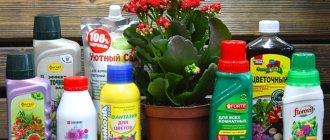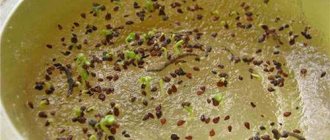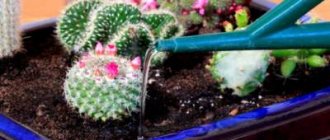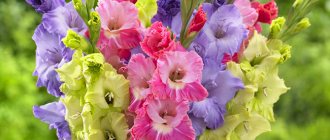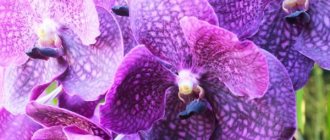Good afternoon, my reader. In specialized gardening stores you can see a wide variety of fertilizers. But every gardener has his own proven folk recipe using improvised means. We will share with you some of them, prepared with added sugar.
Sugar as a fertilizer for indoor plants. The illustration for the article is used from the site podary45.ru
We feed the flowers... with sugar
Candidate of Agricultural Sciences Nikolay Khromov
Few people know that ordinary yeast contributes to the growth of flowers and their full development. Yeast solution is a rich storehouse of various microelements that activate the processing of organic compounds both in the soil and in plants. In the process of their processing, the composition and quality of the soil improves, plant immunity to diseases and pests increases, and active growth and development of the root system is observed.
To prepare a growth-stimulating solution, just take 10 g (bag) of dry yeast and 4 cubes of refined sugar and dissolve in 1.5 liters of water. Keep the resulting mixture for 2 hours in a warm room, and then dilute it five times with water. For a smaller volume, 1 g of dry yeast and 1 tsp are enough. granulated sugar. When watering a flower, use 50-100 ml of solution per 1 kg of soil in a pot. It is advisable to carry out the procedure once in spring, summer and autumn.
Yeast can be used for any indoor plants, especially flowering ones. However, during fermentation, yeast can actively absorb essential elements such as potassium and calcium from the soil, sometimes in large quantities. It is quite easy to compensate for these elements: simultaneously with watering with a nutrient solution, add wood or stove ash to the pre-loosened soil - only 5-10 g, or even better, 0.5-1.0 g of potassium sulfate dissolved in soft, settled water.
It is also good to soak plant sections in a yeast solution for faster formation of the root system (12-15 days earlier).
Another effective way to feed indoor flowers is sugar. In the soil it breaks down into glucose and fructose. Plant tissues cannot absorb fructose, but glucose can become a powerful source of energy for most important processes of their life, such as respiration and absorption of nutrients. In addition, glucose is a universal building material that literally builds the most complex organic molecules. But glucose can become a builder of organic molecules if it is fully absorbed by plants, and for this a second component is needed - carbon dioxide. If there is no or little carbon dioxide in the soil, mold may appear and root rot may occur. Therefore, along with doses of sugar, it is recommended to add any of the microbiological preparations for the soil (EM preparations). These drugs contain bacteria that promote the decomposition of organic matter and the release of carbon dioxide.
The benefits of sugar have long been confirmed by numerous studies by biologists. Sugar helps support flowers in winter when they suffer from lack of light. But plants become stronger and healthier after sugar additions and in the spring. Their growth increases, flowering improves and its duration increases.
To prepare a sugar solution: 1 tbsp. l. granulated sugar is diluted in 0.6 liters of water. You can also use pure glucose - it is sold at the pharmacy: 1-2 tablets are dissolved in 1 liter of water.
It is recommended to feed with a sugar solution no more than once a month, being careful not to over-moisten the soil to prevent the formation of rot and mold.
Large plants, in particular ficus, love sugar fertilizers, but cacti also prefer them.
Coffee grounds can be a good organic food for indoor flowers. Dried coffee acts as a slow-release nitrogen fertilizer. Nitrogen is released from coffee grounds by microorganisms contained in the soil. As a result, the soil becomes looser, lighter, and more oxygen accumulates in it.
Before adding, it is advisable to dry the coffee grounds a little, and then mix them with the soil at the rate of 1 tsp. grounds per 500 g of soil. Usually this additive is enough for 5 kg of soil. You should not increase the dose, because drinking coffee in excess can acidify the soil.
Indoor roses respond best to sleeping coffee - the duration of their flowering increases and the brightness of the flowers increases. Sleeping coffee is useful for azaleas, gardenias, anthuriums, and indoor cypress. But you shouldn’t use tea leaves for fertilizing. Once in the soil, it will attract black flies - sciarids.
Valuable fertilizer for indoor flowers can be obtained from the peels of oranges, tangerines, and lemons. To prepare the infusion, cut the peel into small pieces (1 cm each), fill a third of a liter glass jar with them and pour boiling water over them for a day. After time, the infusion is filtered and topped up with settled water to the top of the jar. Apply such fertilizers once every four to five weeks, pouring 50 ml under each flower. The infusion heals both the soil and plants, increasing their immunity. In addition, the aroma of citrus fruits repels spider mites and scale insects. But if these pests have already settled on the flowers, you will have to use fungicides.
How to feed?
There are several ways to fertilize flowers.
Method number 1 . The simplest option looks like this: pour a spoonful of sugar directly into the pot, and pour water on top of the soil.
Method number 2. Sugar must be diluted in water. To prepare healthy sweet fertilizer you will need 1 tsp. sugar per half liter of settled water.
The second method is considered more effective, since glucose in liquid form reaches all the roots of the flower.
You should know that the absorption of glucose by plant tissues properly occurs only when in contact with carbon dioxide. Based on this, along with sugar feeding, it is necessary to introduce preparations based on bacteria into the soil, which promote the rapid decomposition of organic matter. For this, experienced gardeners use yeast, since their breakdown produces carbon dioxide.
Considering this rule of home flower care, you can prepare a sweet solution with the addition of yeast. For this you need 1 g of dry yeast and 1 tsp. dissolve granulated sugar in a liter of settled water. The solution consumption per 1 kg of soil is 100 ml.
It is recommended to fertilize with sugar and yeast once in the summer, autumn and spring. More frequent fertilization will not be beneficial, because yeast fungi tend to absorb from the soil useful substances necessary for the healthy development of flowers - calcium and potassium. It is advisable to introduce these microelements into the soil together with yeast in the form of wood or stove ash - only 5 - 10 g. You can also dissolve 1 g of potassium sulfate in soft, settled water.
Rules for feeding flowers with sugar
Specialized garden centers offer many options for fertilizers and fertilizers for various crops, including flowers. But many gardeners are not limited to choosing ready-made products. True lovers of floriculture always have a touch of creativity in growing their favorite green pets. Folk remedies and forgotten “grandmother’s recipes” are often used to obtain highly decorative lush flowers.
What plants is it suitable for?
Sugar fertilizers are one of the most popular natural fertilizers. They are a source of glucose, this essential component for vital biochemical processes occurring in plants. Incoming glucose is an intense source of energy and stimulates photosynthesis in plants.
Sugar is suitable for almost all indoor plants, but flowering crops respond especially actively to fertilizing : flowering periods are extended, crown leaves become larger, and acquire a rich green color.
Domestic roses, succulents (their typical representatives are cacti), as well as large-sized plants (ficus, dracaena, palm trees) and smooth-leaved species respond well to sugar feeding.
Signs of flower depletion are:
- growth slowdown;
- decrease in color intensity of leaves and stems;
- reduction in leaf size;
- stretching and thinning of stems;
- lack of flowering;
- yellowing and subsequent dropping of leaves;
- loss of decorativeness and decreased immunity to plant diseases.
If you detect at least one of these signs, you must immediately feed the plants.
Recipes
Sugar fertilizers have a beneficial effect not only on indoor flowers, but also on garden flowers. Particularly useful are combined fertilizers consisting of sugar and other natural ingredients : yeast, wood ash, coffee grounds. But you need to compose nutritional mixtures competently. Fertilizing affects different crops differently, so it is imperative to take into account what grows in the garden plot or what plants “live” on the windowsill.
The composition of the soil also changes differently. For example, coffee grounds slightly acidify the soil, yeast can cause excessive fermentation, and wood ash in an overdose can cause burns to the root system.
For a successful result, all factors must be taken into account.
Here are several recipes for preparing effective sugar-based fertilizers, recommended by experienced gardeners.
- The simplest recipe is 1 tbsp. a spoonful of granulated sugar (without a slide) per 1 liter of warm water. There is no clear opinion regarding such feeding. Some gardeners recommend watering once every 1-2 weeks, but most believe that indoor flowers should be watered with the resulting solution once a month (not more often!).
- You can do it even simpler - scatter dry granulated sugar over the surface of the soil in a flower pot (1 level teaspoon per 1 pot) and pour in clean water (about 1 glass). But flower growers consider liquid sugar solutions to be more effective, since in a liquid state, together with water, sugar evenly reaches all elements of the root system, and surface feeding can provoke the appearance of mold and pests.
- Feeding with sugar in combination with yeast is very useful. It is known that substances produced with the participation of yeast (B vitamins, microelements, various phytohormones) stimulate active plant growth, activate regenerative processes in plant tissues, strengthen the root system, accelerate the activity of soil microflora, promote increased production of carbon dioxide, which helps rapid glucose absorption. Nutritional supplements using yeast are equivalent to complex fertilizers .
Sugar-yeast dressing can be prepared as follows:
- Dissolve 1 teaspoon of sugar and 1 g of dry yeast in 1 liter of settled water and water the flowers at the rate of 50-100 ml of the mixture per 1 kg of soil in flower pots;
- 1 tbsp. a spoonful of sugar and 10 g of dry yeast are dissolved in 1 liter of warm water and kept for about 2 hours in a warm place, then the mixture is diluted with settled water in a ratio of 1: 5 and used for watering (the amount of solution is prepared taking into account how many flowers need to be fed, but leave the proportions unchanged).
After fertilizing with yeast, gardeners recommend adding a little (5-10 g) wood ash to the soil to replenish calcium.
Folk recipes are not recommendations created once and for all. They are constantly being improved experimentally thanks to the experiments of amateur gardeners and their observations of the results obtained. Publications constantly appear on the Internet on special websites, blogs, and thematic forums, where flower growers share their achievements and learn useful experiences from each other.
Basic mistakes
When using sugar fertilizers for indoor flowers, many novice gardeners make some mistakes. The most common of them are:
- Watering too often. Excessive watering of plants removes nutrients from the soil. This can also cause rotting of the root system and death of the crop.
- Irregular application of fertilizer. Feeding with sugar gives a good but temporary result, improving the health of indoor plants only for a while. That is why it is important to carry out such care regularly.
Fertilizers for indoor plants and flowers
“All indoor flowers and plants need active feeding from April to October: in spring and summer, once a week or two, they must be pampered either with complex fertilizers, or every other time with mineral and organic fertilizers,” says the chairman of the Moscow Flower Growers club Tatyana Zhashkova . – As a rule, during the winter rest period, most plants slow down their growth and even go into hibernation. And they need to be fed much less often - once every month and a half. Some succulents are not watered or fed at all.
So, from April, house plants and flowers need not only more frequent watering, but also more frequent feeding. Which fertilizer to choose is at your discretion. Liquid complex fertilizers, which are simply diluted in water and watered as usual, are very popular. There are fertilizers for more vigorous flowering, to accelerate growth, etc.
IMPORTANT! Universal complex fertilizers are suitable for all house plants. But still, fertilizers, like soil, are best chosen according to the type of plant - for flowering plants, for vines, for succulents, for orchids, etc.
When fertilizer is vital for indoor flowers
- When the growth of flowers suddenly stops, they do not throw out new leaves and buds.
- When a plant suddenly begins to shed old leaves, but new ones do not grow.
- When you have forgotten what the flowers of your favorite plants look like.
- When you see that the leaves have faded, the stems have become thinner, less elastic, and in general, the plant has an extremely sick appearance.
Dangerous myths about homemade fertilizers
1. Coffee grounds can kill Many people add dried tea leaves and coffee grounds to flower pots, they say, they have so many benefits, and the soil will be looser. And while tea leaves actually at least make the soil looser, coffee grounds acidify the soil, which can be detrimental to flowers, especially blooming ones.
2. Egg shells will fill the soil with calcium Firstly, indoor flowers actually do not need calcium. Secondly, the shell is best used as drainage. If crushed into smaller pieces, it can be used as a loosening agent for the soil. In this case, there really is a benefit.
What do plants really need?
Sugar Glucose, which flowering plants adore. If from time to time you pour half a teaspoon of sugar under the roots and immediately water it with water, the plants will thank you for long and lush flowering.
Shredded Banana Peel Good source of potassium. But it requires serious preparation: dry the peel thoroughly for a week, grind thoroughly in a blender. And mix this powder with soil in pots. This is especially good to do during a transplant.
There is also this advice: steep fresh peels in water until foam appears, then strain and water the plants with this “broth” once every two weeks.
Wood Ash Some people use cigarette ash, but it contains too many carcinogens, especially if they are flavored cigarettes. It is best to add ash from ordinary firewood brought from the dacha into the pots. It fills the earth with nitrogen, which is especially necessary for flowers during the period of vigorous growth and flowering. In addition, ash perfectly fights against harmful flies.
You can make liquid ash fertilizer: 2 tablespoons of ash per liter of warm water. Leave for two days, water once every two weeks.
Nettle Fresh nettle will help flowers not get sick and be strong. Nettle decoction fills the earth with minerals and nitrogen. This is the so-called green fertilizer, which is useful both in the country and at home. It is enough to soak the nettle shoots for a day in warm water, strain, and water once every two weeks.
Vodka If the plants have become stale and have lost the joy of life, simply “water” them - dilute 100 grams of vodka in 3 liters of water and water your home flowers. In just two or three days you will notice how your pets will perk up.
Water from a terrarium and aquarium If plants love liquid fertilizers made from animal and bird manure, then why wouldn’t they love aquarium water, where various nutrients are also dissolved? Of course, you shouldn’t overuse it and completely switch the plants to aquarium water only, but once every two weeks, as a feeding, is very suitable.
Let's sum it up
Flowers are like people - they do not like scorching heat and temperature changes, they are “friends” or “enemies” with their neighbors, they “enjoy” a cool shower. Provide them with the right “diet” and beware of bacteria that poison the water. Prepare the water before placing the bouquet in it. Perform simple “surgical” procedures. Follow these rules, and the bouquet will delight you not for a day or two, but for 4-6 days, depending on the endurance of individual plants. Even delicate spring flowers like irises will not fade in the morning, but will gain new strength. Understand the needs of flowers and they will respond to your care!
Tips for chrysanthemums
Chrysanthemums are the hardiest flowers and usually last a long time. But you can extend their life even more. Here are three tips.
- Slice After trimming, split the end crosswise and bend each quarter to the side.
- Water. Chrysanthemums last the longest in a vase with sweetened water - glucose helps maintain the fresh appearance and vigor of the flowers.
- Vase. Better tall and with a wide neck.
Do not forget that the lower leaves must be removed, the water temperature should not exceed 20°C, and the bouquet should not be exposed to direct rays of the sun or drafts.
Fading chrysanthemums can also be “revitalized.” Remove excess leaves. Cut off 4-5 cm of the stem and quickly place it in boiling water. After five seconds, also quickly move the flower into a vase with cold water. Spray the petals generously and place the vase in a cool place. After a couple of hours, the chrysanthemum will regain its vigor.
Dracaena
This home shrub with its appearance will tell the owner about the lack of nutrients. Drooping leaves, loss of color, lethargy indicate that it is time to feed the plant. Sometimes it requires complex fertilizer. But if you decide to limit yourself to only sugar for now, then making a sweet solution is quite simple. To do this, you need to take 2-3 tablespoons of the bulk product and dilute it with 1 liter of water. After thorough mixing, the liquid is ready for watering. It can be used no more than once a month.
Crassula
Crassula or Crassula is often grown by gardeners. This plant loves moisture and is demanding on air humidity. Since sugar increases the humidity in the environment, Crassula can be sprayed with sweet water rather than watered. To prepare the solution, dilute 1 teaspoon of the bulk product in 0.5 liters of water. Spraying is convenient to do with a regular spray bottle.
cacti
Humans' prickly green friends are very unassuming and do not require much attention. But sometimes they also need organic fertilizers.
You can feed cacti with sugar. Do not overuse frequent sweet watering: 4 times a year is enough for adult plants. Moreover, two of these feedings occur in summer and spring, when the growth of cacti is especially active. To prepare the solution, take 2 teaspoons of granulated sugar and dilute it in a glass of warm water.
